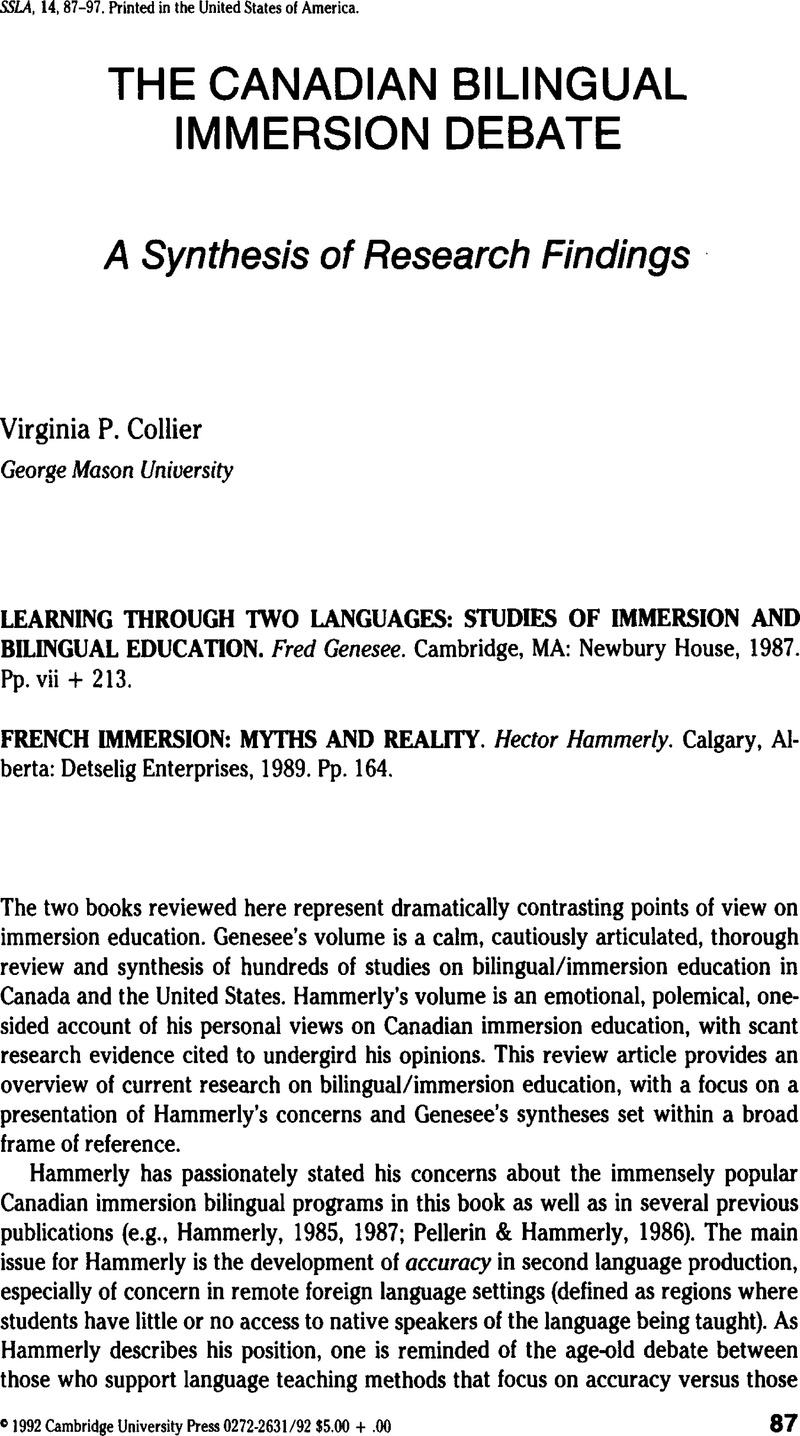Crossref Citations
This article has been cited by the following publications. This list is generated based on data provided by Crossref.
Hammerly, Hector
1992.
The Need For Directed Language Learning In The Fl classroom: A Response to Collier.
Studies in Second Language Acquisition,
Vol. 14,
Issue. 2,
p.
215.
Sheen, Ronald
1993.
Double Standards in Research Selection and Evaluation.
RELC Journal,
Vol. 24,
Issue. 2,
p.
1.
Johnstone, Richard
1993.
Research on language learning and teaching: 1992.
Language Teaching,
Vol. 26,
Issue. 3,
p.
131.
THOMAS, WAYNE P.
COLLIER, VIRGINIA P.
and
ABBOTT, MARTHA
1993.
Academic Achievement through Japanese, Spanish, or French: The First Two Years of Partial Immersion.
The Modern Language Journal,
Vol. 77,
Issue. 2,
p.
170.
Carpenter, Kathie
Fujii, Noriko
and
Kataoka, Hiroko
1995.
An oral interview procedure for assessing second language abilities in children.
Language Testing,
Vol. 12,
Issue. 2,
p.
157.
Mellow, J. Dean
Reeder, Kenneth
and
Forster, Elizabeth
1996.
Using Time-Series Research Designs to Investigate the Effects of Instruction on SLA.
Studies in Second Language Acquisition,
Vol. 18,
Issue. 3,
p.
325.
McCarthy, John
1997.
Towards a conceptual framework for implementing a cross‐curricular approach to language awareness in the school curriculum1.
Language Awareness,
Vol. 6,
Issue. 4,
p.
208.
Blain, Sylvie
and
Painchaud, Gièle
1999.
L'impact de la rétroaction verbale des pairs sur l'amélioration des compositions des élèves de 5e année en immersion française.
The Canadian Modern Language Review,
Vol. 56,
Issue. 1,
p.
73.
Thibault, Pierrette
and
Sankoff, Gillian
1999.
L'évaluation du français des jeunes Anglo-montréalais par leurs pairs francophones.
The Canadian Modern Language Review,
Vol. 56,
Issue. 2,
p.
245.
Burke, April M.
2013.
The Latino Education Crisis: The Consequences of Failed Social Policies, by Patricia Gándara and Frances Contreras.
Bilingual Research Journal,
Vol. 36,
Issue. 3,
p.
371.
Clifford, Vanessa
Rhodes, Anthea
and
Paxton, Georgia
2014.
Learning difficulties or learning English difficulties? Additional language acquisition: An update for paediatricians.
Journal of Paediatrics and Child Health,
Vol. 50,
Issue. 3,
p.
175.
Collier, Virginia P.
and
Thomas, Wayne P.
2017.
Validating the Power of Bilingual Schooling: Thirty-Two Years of Large-Scale, Longitudinal Research.
Annual Review of Applied Linguistics,
Vol. 37,
Issue. ,
p.
203.
Truscott, John
2024.
Input.



